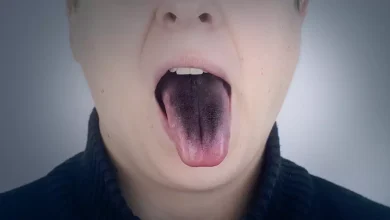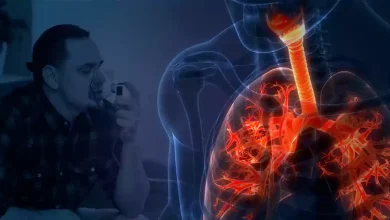All about Deep vein Thrombosis

What is Deep vein Thrombosis (DVT)?
Deep vein thrombosis (DVT), also known as venous thrombosis happens when (a blood clot) occurs in veins quite deep in your body and the veins are injured along with the blood flowing through becomes quite sluggish. The blood clots might get blocked partially or completely block blood flow through the vein. Most cases of happen deep vein thrombosis (DVT) happen in your lower leg, thigh, or pelvis, but they also can arise because of a few parts of your body like the arm, brain, intestines, liver, or kidney.
What are The Types of Deep vein Thrombosis?
There are two types of Deep vein thrombosis including:
Acute DVT: This typically happens when blood gets clotted in a deep vein, normally in the legs. Immediate medical care is needed to cure this problem.
These types of clots can be life-threatening because they can break loose, and passes through the bloodstream to the lungs, and block blood flow in the lungs, a condition known as pulmonary embolism.
Chronic DVT: A clot that is persistent for one to two months old is known as “chronic.” DVT. With passing time the clot becomes tougher and scars the vein. Because of this procedure, the vein becomes quite smaller and blood flow in not happen effectively.

What are The Symptoms of Deep vein Thrombosis?
The symptoms of deep vein thrombosis include
- Swelling in Leg
- Leg pain, soreness, or cramping that usually starts in the calf
- The skin color on the leg will become red or purple, based on your skin color
- The affected leg will have a constant feeling of warmth
What Causes Deep Vain Thrombosis?
The causes of Deep vein Thrombosis may include:
In almost all causes of DVT are happens the blood flow is blocked because of many reasons. The main reasons deep vein thrombosis (DVT) happens because of harm to a vein from surgery or inflammation and damage because of infection or injury. Genetics may also play an important role in people developing this condition along with having insufficient blood flow in a deep vein which might have happened because of an injury, surgery, or immobilization.

What are the Risk Factors of Deep Vain Thrombosis?
The risk factors of Deep Vain Thrombosis include
Age: People who are above the age of 60 are at a high risk of deep vein thrombosis.
Lack of movement: In people whose legs don’t move for a long time, the muscles of the calf get contracted and hinder the flow of blood. If the legs are not moving for a long period, the calf muscles don’t get a contract. Muscle contractions aid the flow of blood. Sitting on a chair or a couch for a long period of time, like while driving or flying, the risk of DVT increases. So long-term bed rest may lead to getting admitted to a hospital stay or a medical condition like paralysis.
Injury or surgery: Injury to the veins or surgery also elevates the risk of blood clots.
Pregnancy: Pregnancy augments the pressure in the veins in areas near the pelvis and legs. The risk of blood clots from pregnancy can last for six weeks after the birth of the baby. People who have inherited clotting disorders are at a higher level of risk.
Birth control pills (oral contraceptives) or hormone replacement therapy.
These factors raise the amount o Blooding clots.
Obesity: If you are overweight then it increases the pressure in the veins of the pelvis and legs
Smoking: Smoking adversely effects the flow and clots of blood which may augment the risk of DVT.
Cancer: Some kinds of cancers augment the elements in the blood that may develop into clotting of the blood. Some types of cancer treatment also increase the risk of blood clots.
Heart failure: Heart failure raises the chances of developing DVT and pulmonary embolism which can be increased because the heart and lungs cannot work properly among people who have the problem of heart failure
Inflammatory bowel disease: Conditions such as Crohn’s disease or ulcerative colitis raise the risk of DVT.
Genetics: An inherited disorder alters one of the clotting factors in the blood. A genetic factor on its own may not cause blood clots unless it’s combined with another risk factor.
What are the Complications of Deep Vain Thrombosis?
The complications of DVT includes:
Pulmonary embolism (PE): Pulmonary embolism can be a fatal linked with deep vain thrombosis. It happens when a blood clot in a leg or any other part of the body breaks free and becomes stuck in a lung’s blood vessel. If notice signs of PR immediately go for medical help.
Postphlebitic syndrome: It affects the veins from the blood clot and decreases the blood flow in the affected parts of the body. Symptoms may include pain in leg, swelling of leg, skin color changes and skin sores.
Complications during treatment: Blood thinners are mostly used to cure DVT. Hemorrhage is a dangerous side effect of blood thinners. It’s very important to go for regular blood tests while taking blood-thinning drugs
How is Deep Vain Thrombosis Diagnosed?
Deep vain thrombosis is diagnosed tests including:
D-dimer blood test: D dimer is a protein that’s ceated by blood clots. Most of the people with severe Deep vain thrombosis have augmented blood levels of D dimer. This test sometimes help to rule out PE.
Duplex ultrasound: D dimer is a protein produced by blood clots. Most of the people with severe DVT have augmented blood levels of D dimer. This test help to rule out PE.Duplex ultrasound. test uses sound waves to take images of how blood flows in the veins. It’s one of the chief tests to diagnose DVT. During the test, a nursre will gently moves a small hand-held device known as transduceron the skin on the body area that’s being studied. Along with ultrasounds can be carried out many days to detect fresh blood clots or to examine if an existing one is developing. These drugs, also known anticoagulants, help to avert blood clots from becoming larger. Blood thinners decrease the risk of getting more clots. Blood thinners can also be taken through mouth or provided by IV or can be injected under the skin. Many blood-thinning medicines are used to treat DVT but a few certain blood-thinning medications are not safe to take if you are pregnant.
Venography: This test uses X-rays and dye are uesd in this test to create an image of the veins in the feet and legs and feet and then the die is directly injected into the large vein in the ankle or foot, It aids to show blood vessels more clearly on X-rays. The test is uncommon and it’s done very rarely. Other tests, including ultrasound, are done first.
Magnetic resonance imaging (MRI) scan: This test is mostly done to diagnose DVT in veins of abdomen.
What are the Treatment Options of Endocarditis?
Clot busters (thrombolytics): These drugs are used for more-serious types of DVT or PE, or if other medications aren’t working. Clot busters are given by IV or through a tube (catheter) placed directly into the clot. They can cause serious bleeding, so they’re usually only used for people with severe blood clots.
Filters: If you can’t take medicines to thin your blood, a filter may be placed into a large vein — the vena cava — in your belly (abdomen). A vena cava filter prevents clots that break loose from lodging in the lungs.
Support stockings (compression stockings) These special knee socks help prevent blood from pooling in the legs. They help reduce leg swelling. Wear them on your legs from your feet to about the level of your knees. For DVT, you typically wear these stockings during the day for a few years, if possible.
Living with Deep Vain Thrombosis
A large number of people get fully cured of deep vein thrombosis (DVT) within a few weeks or months. During this period, there are a few things you need to take care of to relieve your symptoms. Elevate your leg to decrease the swelling. But if it’s a pulmonary embolism then it may be life-threatening. Follow the instructions of your doctor religiously then you will recover fast.
Whom to Consult?
If you feel signs and symptoms of Deep vein thrombosis (DVT), take an appointment with your doctor and discuss the signs and symptoms you are experiencing.
In case you develop symptoms of a pulmonary embolism (PE) it can be a fatal complication of deep vein thrombosis so you have to go for immediate medical help.




